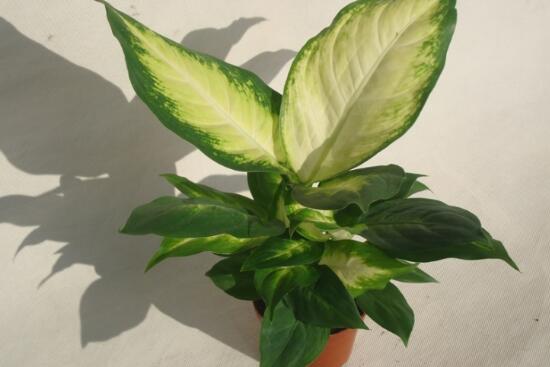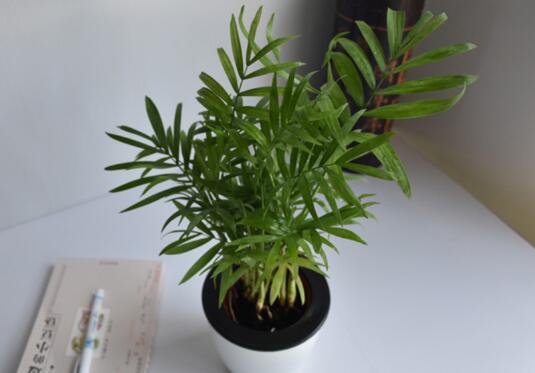How to deal with the freezing injury of the evergreen flower, temperature pruning/plant ash daubing wound
Evergreen, the most popular foliage plant at present, although it is poisonous, it is potted at home by many people because it is good-looking and effective. However, because many flower friends are novices, they do not know that flowers and leaves are afraid of the cold. As a result, they do not take good measures to keep warm in winter, resulting in freezing damage to flowers and leaves. What should I do at this time? Today, the editor will tell you the answer.
1. The evergreen flowers and leaves are damaged by frost, and the degree of freezing is judged.

The flowers and leaves are warm and not resistant to cold. The best growth temperature is between 25-30 ℃, and the winter temperature should not be lower than 5 ℃. In winter, once the temperature is too low, the evergreen leaves are easy to freeze and die. What if the flowers and leaves are damaged by frost? At this time, we should calmly judge the degree of frostbite of the plant, and then aim at the solution, and then move on.
Second, the degree of frost injury of evergreen flowers and leaves and its solutions.
1. Slight frost injury
If it is found in time, or in the southern winter, the freezing damage to the evergreen flowers and leaves is generally slight. At this time, the leaves of the plant will lose luster, the leaves will lose water and droop, and for a longer time, there will be symptoms of yellowing of evergreen leaves.
Solution: if it is a slight frost injury, flower friends can put the flower and leaf evergreen in a place with a higher temperature (13: 18 ℃), and it will slowly recover. Note: the temperature should rise slowly, not too fast, which is disadvantageous to the growth of evergreen flowers and leaves.
2. Mild frost injury
Above the microscale, there are mild, moderate and severe frostbite. If it is not found in time, the degree of frostbite of flowers and leaves will be mild in the end, which is characterized by drooping leaves and frostbite spots on the leaf surface.
Solution: if it is a mild frostbite, flower friends can first use scissors to cut off the frostbitten area on the evergreen leaves, and then put it in a warmer place. Similarly, the temperature should rise slowly.
3. Moderate freezing injury
In winter, the temperature will drop sharply, if we do not do warm measures, flowers and leaves evergreen growing at low temperature, a long time will reach poisoning frostbite. Its performance is as follows: there are not only a large number of frozen spots on the leaves of evergreen leaves, but also the scope of damage will be extended to the petiole.
Solution: what if the evergreen flowers and leaves suffer from frost injury? If it is moderate freezing injury, everyone should pay attention to it. First of all, cut off the leafy evergreen with the petiole, then smear the wound with plant ash, and finally put it in a warmer place to control watering, which can be restored over a period of time.
4. Severe freezing injury
When the evergreen leaves are exposed to low temperature or extremely low temperature for a long time, they will suffer severe frostbite! Its performance is as follows: the damage to the plant is obvious, and even the underground roots may have been frostbitten, so there is little hope to save it at this time!
Solution: when frostbite has not spread to the whole plant, remove the plant, cut off all the damaged branches, leaves and roots, store it with moist sand after disinfection, and then cut it in the spring (refer to the breeding method of evergreen flowers and leaves); when the whole plant is frostbitten, it cannot be saved, so let's buy a new pot.
How to save evergreen from freezing injury in winter when the temperature is lower than 5 ℃, evergreen is very vulnerable to cold injury, so timely rescue measures should be taken at this time, otherwise it will cause death. Slight cold damage leaves drooping, the leaves lose their due luster. At this time, as long as the flowers and leaves evergreen to a higher temperature place, it can return to normal, but pay attention not to heat up suddenly. In addition to drooping leaves with mild cold injury, cold injury plaques will occur in the leaves after boiling water scald. At this time, in addition to moving the evergreen leaves to a place with higher temperature in time, the cold spots on the leaves should also be cut off. Most of the leaves with moderate cold injury appear cold spots, and the petioles appear water-stained patches and lose green. at this time, the leaves should be cut off with stalks, and the wound should be smeared with plant ash or coal ash, then put in a place with higher temperature, and watering should be controlled. The shoots and new leaves of severe cold injury turned green and showed water-stained patches, and the underground roots also rotted due to cold injury. The rescue method is to dig up the plant in time, cut off the rotten roots, cut off the damaged branches and stems, smear the wound with plant ash, store it in wet sand, and cut it after the beginning of spring. If severe cold injury occurs and disease spots appear in the whole plant, there is little hope of survival and renewal should be considered. Evergreen flowers and leaves native to tropical and subtropical regions of South America, like warm, humid semi-shady environment, not cold-resistant, afraid of drought, although like sufficient sunshine, but also afraid of strong direct sunlight, can be placed in bright light and no direct sunlight for maintenance. The suitable temperature for growth is from 18 ℃ to 25 ℃. Because of the large leaf area and large water evaporation, in addition to a large amount of watering, water is often sprayed on the leaf surface in the growing season to improve air humidity and prevent leaf edge scorch. Apply mature dilute liquid fertilizer or compound fertilizer every 10 days or so. Keep it in a brightly lit room in winter, reduce watering appropriately, and keep room temperature above 10 ℃. If there is heating in the room, you can spray the plant with water close to room temperature, so as not to affect plant growth due to air dryness. Since this species can rarely grow lateral branches, it can be pruned or pruned in cultivation to control plant height, maintain beautiful plant shape, and promote lateral buds to achieve the purpose of multi-flowering. The residual flowers should be cut off in time after the flower fade, so as not to consume too much nutrients and affect the plant growth. The plant has a dormant period of 4 to 6 weeks after flowering, watering should be controlled, fertilization should be stopped, and the basin should be changed at the end of the dormant period. The basin soil is rich in humus and has good air permeability. It can be mixed with rotten leaf soil or peat soil and vermiculite or perlite. After changing the pot, put the plant in a warm semi-shade, keep the soil and air moist, and wait for new branches to sprout. The above is the drunken flower network on the maintenance of evergreen knowledge introduction, I hope you can have some harvest!
- Prev

How do pocket coconuts grow fast, cultivation methods and precautions for pocket coconuts
Pocket coconut is a plant native to northern Mexico. It is highly ornamental and cultivated by many people in our country. However, if you want to raise it well, you need to pay attention to a lot of places, so how do pocket coconuts grow fast? What are the cultivation methods and precautions for pocket coconuts
- Next

What if the pocket coconut leaves are dry? pay attention to these five points to keep you away from the leaves.
Pocket coconut is a highly ornamental plant, its shape is small, beautiful and chic, so it is loved by many people, but if the plants in the United States dry up, it will also affect the overall beauty, so what about the dried leaves of pocket coconuts? Next, the editor will take you to learn about it.
Related
- Fuxing push coffee new agricultural production and marketing class: lack of small-scale processing plants
- Jujube rice field leisure farm deep ploughing Yilan for five years to create a space for organic food and play
- Nongyu Farm-A trial of organic papaya for brave women with advanced technology
- Four points for attention in the prevention and control of diseases and insect pests of edible fungi
- How to add nutrient solution to Edible Fungi
- Is there any good way to control edible fungus mites?
- Open Inoculation Technology of Edible Fungi
- Is there any clever way to use fertilizer for edible fungus in winter?
- What agents are used to kill the pathogens of edible fungi in the mushroom shed?
- Rapid drying of Edible Fungi

